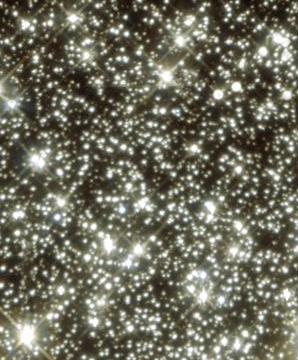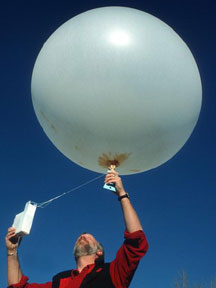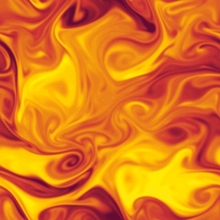Swirling flow patterns in a computer simulation of turbulence
Click on image for full size
Courtesy of G. Brethouwer (Royal Inst. Tech., Sweden)
Turbulence: All Mixed Up
If you've ever ridden in an airplane, you might have some idea
what turbulence is. When an airplane flies through a turbulent
place in the atmosphere it will bounce around a bit as the wind
outside blows the plane in different directions.
Nothing to worry about - turbulence is natural and it happens all
over the universe, from river
rapids to ocean
waves to Jovian planets
to stars to
nebulae! You can
even see turbulence when you pour milk into a cup of hot tea.
Turbulence is just a fluid
moving around crazily so it's all mixed up. It's difficult to predict what a
turbulent flow is going to do because of something called the
butterfly effect.
You might also be interested in:

How did life evolve on Earth? The answer to this question can help us understand our past and prepare for our future. Although evolution provides credible and reliable answers, polls show that many people turn away from science, seeking other explanations with which they are more comfortable.
...more
Earth's ocean covers more than 70% of our planet's surface. There are five major ocean basins: the Pacific, the Atlantic, the Indian Ocean, the Arctic Ocean, and the Southern Ocean that surrounds Antarctica.
...more
The pinpoints of light that you see in the night sky are stars. Your ability to see the stars depends on how bright they are, as well as how close they are to Earth. Stars are giant balls of gas in space
...more
When you hear the word Fluid you might think of a liquid like water or juice - something that you can stir up with a spoon. That's right - all liquids are fluids. But did you know that gases like air are
...more
The butterfly effect is a scientist's way of saying that small things can make a big difference. As an example, let's pretend a hurricane has just formed in the the Carribean Sea, southeast of Florida.
...more
When you "blow up" a balloon, you are adding pressure to the inside of the balloon. That makes the rubber in the balloon stretch. The balloon gets bigger. Pressure is an idea scientists use to describe
...more
Text for this level has not been written yet. Please see the "Intermediate" text for this page if you want to learn about this topic. To get to the "Intermediate" text, click on the blue "Intermediate"
...more
Magnetism is one of the main forces of nature. Another force of nature is gravity. Magnetism causes magnetized objects to be attracted to each other. An example of the force of magnetism is the magnet
...more















